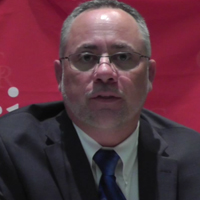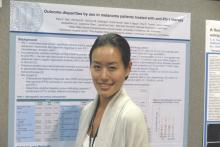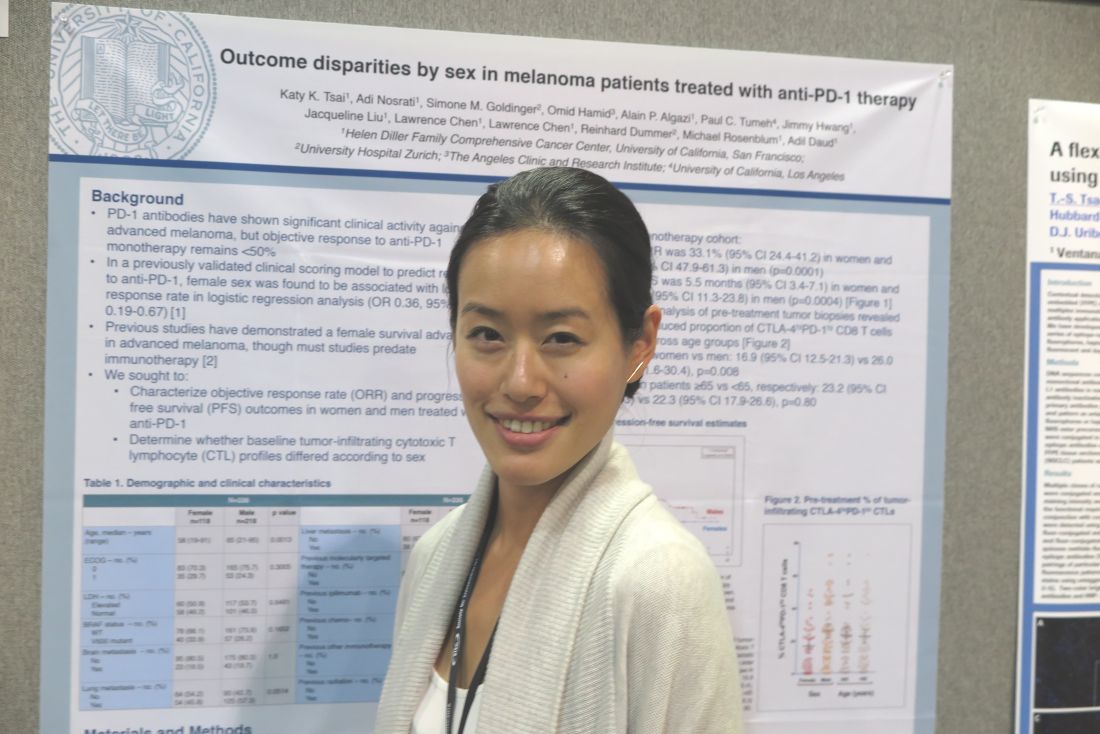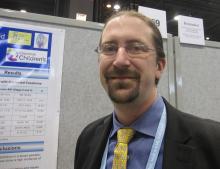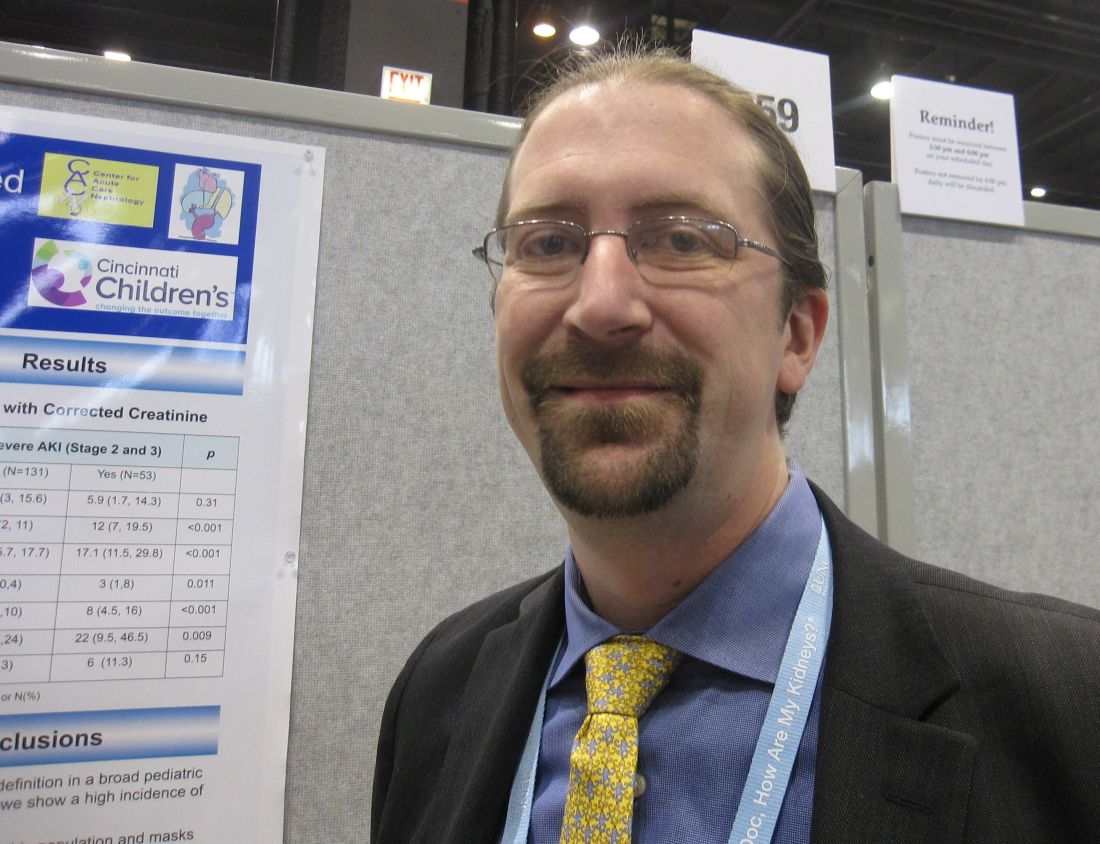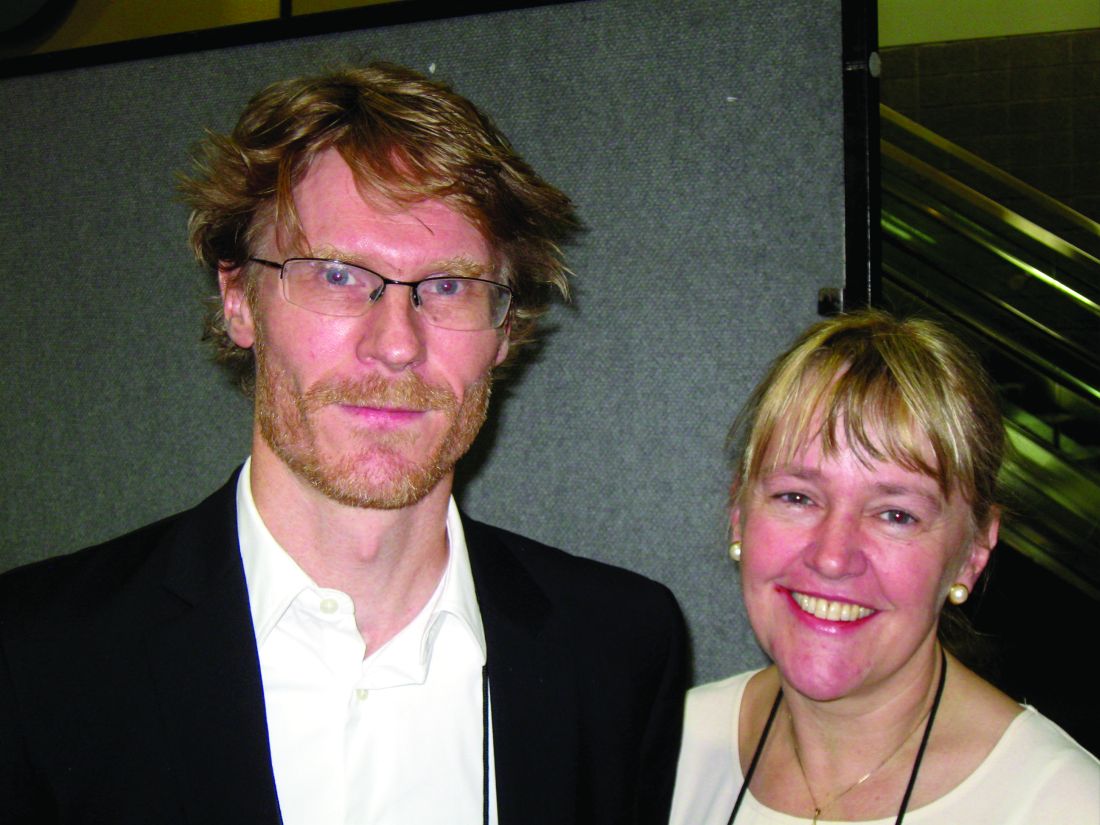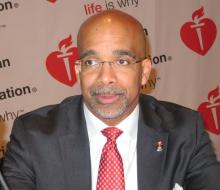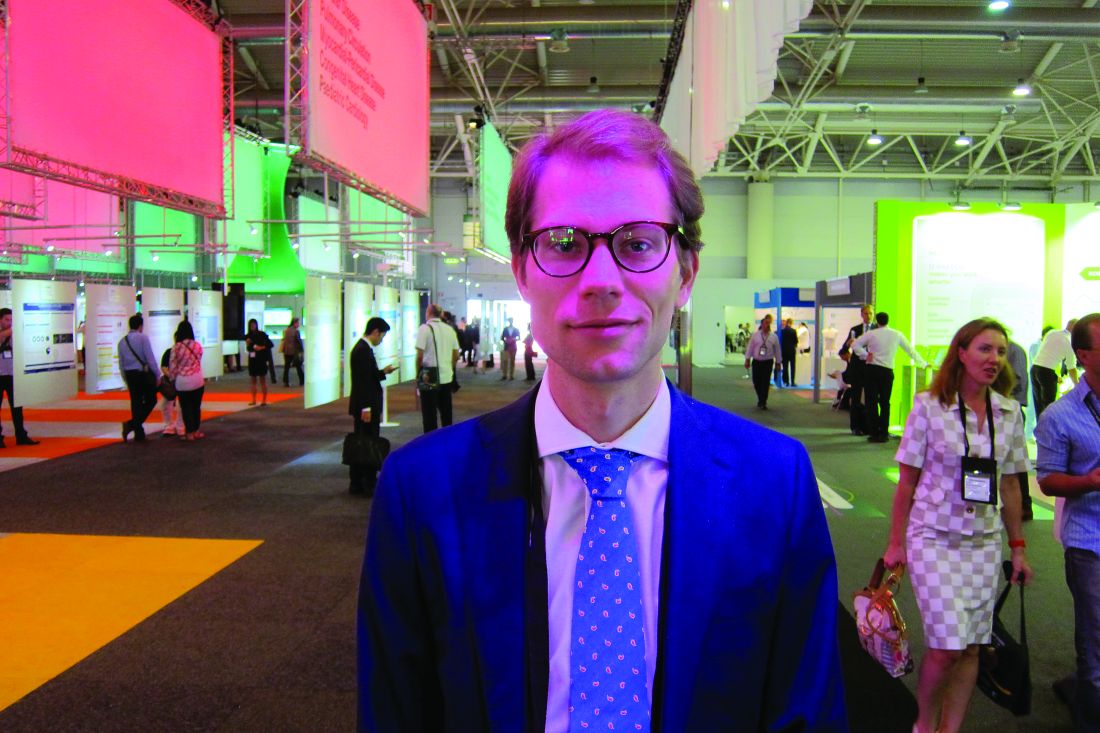User login
NCCN guidelines on MM now include MRD testing
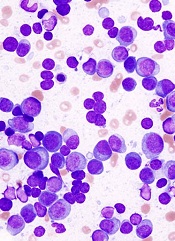
The National Comprehensive Cancer Network (NCCN) has revised its clinical practice guidelines on multiple myeloma (MM) to include response criteria developed by the International Myeloma Working Group (IMWG) and testing for minimal residual disease (MRD).
The NCCN develops practice guidelines to help physicians in making informed treatment decisions.
Its recommendations can facilitate reimbursement for testing or treatment.
“The NCCN’s action represents a further step toward broad use of MRD testing,” said Brian Durie, MD, chairman of the International Myeloma Foundation (IMF).
The importance of first identifying and then eliminating MRD is the key principle of the IMF’s Black Swan Research Initiative®, a collaborative effort launched in 2012 to cure MM.
“We’ve long believed early intervention with highly effective treatments is the pathway to curing myeloma, and we are currently testing this in clinical trials,” Dr Durie said.
Through the Black Swan Research Initiative, the IMF helped develop next-generation flow cytometry, 1 of 2 tests recommended by the NCCN to assess the presence of MRD in MM patients. The second test is next-generation sequencing.
The new MM response criteria, on which the NCCN based its most recent revision to the guidelines, were developed and agreed upon by the more than 200 members of the IMWG.
The new response criteria spell out exact definitions of “MRD negative” by next-generation flow cytometry or next-generation sequencing.
“We are pleased that the 2016 IMWG response criteria were adopted in full in the new NCCN recommendations,” said Shaji Kumar, MD, of the Mayo Clinic in Rochester, Minnesota.
The 2016 IMWG response criteria were published in The Lancet Oncology in August. ![]()

The National Comprehensive Cancer Network (NCCN) has revised its clinical practice guidelines on multiple myeloma (MM) to include response criteria developed by the International Myeloma Working Group (IMWG) and testing for minimal residual disease (MRD).
The NCCN develops practice guidelines to help physicians in making informed treatment decisions.
Its recommendations can facilitate reimbursement for testing or treatment.
“The NCCN’s action represents a further step toward broad use of MRD testing,” said Brian Durie, MD, chairman of the International Myeloma Foundation (IMF).
The importance of first identifying and then eliminating MRD is the key principle of the IMF’s Black Swan Research Initiative®, a collaborative effort launched in 2012 to cure MM.
“We’ve long believed early intervention with highly effective treatments is the pathway to curing myeloma, and we are currently testing this in clinical trials,” Dr Durie said.
Through the Black Swan Research Initiative, the IMF helped develop next-generation flow cytometry, 1 of 2 tests recommended by the NCCN to assess the presence of MRD in MM patients. The second test is next-generation sequencing.
The new MM response criteria, on which the NCCN based its most recent revision to the guidelines, were developed and agreed upon by the more than 200 members of the IMWG.
The new response criteria spell out exact definitions of “MRD negative” by next-generation flow cytometry or next-generation sequencing.
“We are pleased that the 2016 IMWG response criteria were adopted in full in the new NCCN recommendations,” said Shaji Kumar, MD, of the Mayo Clinic in Rochester, Minnesota.
The 2016 IMWG response criteria were published in The Lancet Oncology in August. ![]()

The National Comprehensive Cancer Network (NCCN) has revised its clinical practice guidelines on multiple myeloma (MM) to include response criteria developed by the International Myeloma Working Group (IMWG) and testing for minimal residual disease (MRD).
The NCCN develops practice guidelines to help physicians in making informed treatment decisions.
Its recommendations can facilitate reimbursement for testing or treatment.
“The NCCN’s action represents a further step toward broad use of MRD testing,” said Brian Durie, MD, chairman of the International Myeloma Foundation (IMF).
The importance of first identifying and then eliminating MRD is the key principle of the IMF’s Black Swan Research Initiative®, a collaborative effort launched in 2012 to cure MM.
“We’ve long believed early intervention with highly effective treatments is the pathway to curing myeloma, and we are currently testing this in clinical trials,” Dr Durie said.
Through the Black Swan Research Initiative, the IMF helped develop next-generation flow cytometry, 1 of 2 tests recommended by the NCCN to assess the presence of MRD in MM patients. The second test is next-generation sequencing.
The new MM response criteria, on which the NCCN based its most recent revision to the guidelines, were developed and agreed upon by the more than 200 members of the IMWG.
The new response criteria spell out exact definitions of “MRD negative” by next-generation flow cytometry or next-generation sequencing.
“We are pleased that the 2016 IMWG response criteria were adopted in full in the new NCCN recommendations,” said Shaji Kumar, MD, of the Mayo Clinic in Rochester, Minnesota.
The 2016 IMWG response criteria were published in The Lancet Oncology in August. ![]()
Primary Prevention of Coronary Artery Disease
The video associated with this article is no longer available on this site. Please view all of our videos on the MDedge YouTube channel
The video associated with this article is no longer available on this site. Please view all of our videos on the MDedge YouTube channel
The video associated with this article is no longer available on this site. Please view all of our videos on the MDedge YouTube channel
Sex differences in T-cell profiles may drive anti–PD-L1 responses
NATIONAL HARBOR, MD. – Sex difference in immune regulatory responses may drive the poorer responses to treatment with immune checkpoint inhibitors targeted against programmed death–1 (PD-1 inhibitors) seen in women with advanced melanoma, investigators report.
Among patients with advanced melanoma treated with either pembrolizumab (Keytruda) or nivolumab (Opdivo) monotherapy in four clinical trials, the median objective response rate (ORR) among women was 33.1%, compared with 54.6% among men. Median progression-free survival (PFS), respectively, was 5.5 months vs. 18 months, reported Katy K. Tsai, MD, a clinical instructor in cutaneous oncology at the University of California, San Francisco.
“There has been a lot of interesting data coming out recently about the influence of sex hormones on the immune regulatory response in general, so I do think that is something that needs to be explored further,” Dr. Tsai said at the annual meeting of the Society for Immunotherapy of Cancer.
“There are some interesting data to suggest that perhaps women, and in particular pregnant women or perhaps even women who have higher parity than those who are nulliparous, may have higher circulating levels of T-regs that may contribute to dampening this immune response,” she said.
Response prediction model
Dr. Tsai and her colleagues had previously reported on a validated clinical scoring model for predicting response to anti–PD-1 therapy. In that study, they found that female sex was associated with a lower response rate with an odds ratio of 0.36 (95% confidence interval, 0.19-0.67).
In a separate study, they reported that relative abundance in tumors of a partially exhausted T-cell phenotype (PD-1high/CTLA-4–positive CD8 cells) was predictive of response to anti–PD-1 therapy.
In the current study, they looked at data on 118 women and 218 men who had advanced cutaneous melanoma and were treated in one of four clinical trials of pembrolizumab or nivolumab as monotherapy or in combination with an anti-CTLA4 agent such as ipilimumab (Yervoy) (NCT01295827, NCT01704287, NCT01721746, and NCT02156804).
On flow-cytometry analysis of pre-treatment tumor samples, women had a significantly lower proportion of PD-1high/CTLA-4–positive CD8 cells as compared with men (mean, 16.9% vs. 26%; P = .008).
“The mechanisms of this [discrepancy] may have an immunologic basis given the difference in pre-treatment T-cell profiles between women and men. Sex-related differences in tumor immunity and immunotherapy responses warrant further investigation,” the investigators wrote in a poster presentation.
The study was internally funded. Dr. Tsai and her colleagues reported no relevant disclosures.
NATIONAL HARBOR, MD. – Sex difference in immune regulatory responses may drive the poorer responses to treatment with immune checkpoint inhibitors targeted against programmed death–1 (PD-1 inhibitors) seen in women with advanced melanoma, investigators report.
Among patients with advanced melanoma treated with either pembrolizumab (Keytruda) or nivolumab (Opdivo) monotherapy in four clinical trials, the median objective response rate (ORR) among women was 33.1%, compared with 54.6% among men. Median progression-free survival (PFS), respectively, was 5.5 months vs. 18 months, reported Katy K. Tsai, MD, a clinical instructor in cutaneous oncology at the University of California, San Francisco.
“There has been a lot of interesting data coming out recently about the influence of sex hormones on the immune regulatory response in general, so I do think that is something that needs to be explored further,” Dr. Tsai said at the annual meeting of the Society for Immunotherapy of Cancer.
“There are some interesting data to suggest that perhaps women, and in particular pregnant women or perhaps even women who have higher parity than those who are nulliparous, may have higher circulating levels of T-regs that may contribute to dampening this immune response,” she said.
Response prediction model
Dr. Tsai and her colleagues had previously reported on a validated clinical scoring model for predicting response to anti–PD-1 therapy. In that study, they found that female sex was associated with a lower response rate with an odds ratio of 0.36 (95% confidence interval, 0.19-0.67).
In a separate study, they reported that relative abundance in tumors of a partially exhausted T-cell phenotype (PD-1high/CTLA-4–positive CD8 cells) was predictive of response to anti–PD-1 therapy.
In the current study, they looked at data on 118 women and 218 men who had advanced cutaneous melanoma and were treated in one of four clinical trials of pembrolizumab or nivolumab as monotherapy or in combination with an anti-CTLA4 agent such as ipilimumab (Yervoy) (NCT01295827, NCT01704287, NCT01721746, and NCT02156804).
On flow-cytometry analysis of pre-treatment tumor samples, women had a significantly lower proportion of PD-1high/CTLA-4–positive CD8 cells as compared with men (mean, 16.9% vs. 26%; P = .008).
“The mechanisms of this [discrepancy] may have an immunologic basis given the difference in pre-treatment T-cell profiles between women and men. Sex-related differences in tumor immunity and immunotherapy responses warrant further investigation,” the investigators wrote in a poster presentation.
The study was internally funded. Dr. Tsai and her colleagues reported no relevant disclosures.
NATIONAL HARBOR, MD. – Sex difference in immune regulatory responses may drive the poorer responses to treatment with immune checkpoint inhibitors targeted against programmed death–1 (PD-1 inhibitors) seen in women with advanced melanoma, investigators report.
Among patients with advanced melanoma treated with either pembrolizumab (Keytruda) or nivolumab (Opdivo) monotherapy in four clinical trials, the median objective response rate (ORR) among women was 33.1%, compared with 54.6% among men. Median progression-free survival (PFS), respectively, was 5.5 months vs. 18 months, reported Katy K. Tsai, MD, a clinical instructor in cutaneous oncology at the University of California, San Francisco.
“There has been a lot of interesting data coming out recently about the influence of sex hormones on the immune regulatory response in general, so I do think that is something that needs to be explored further,” Dr. Tsai said at the annual meeting of the Society for Immunotherapy of Cancer.
“There are some interesting data to suggest that perhaps women, and in particular pregnant women or perhaps even women who have higher parity than those who are nulliparous, may have higher circulating levels of T-regs that may contribute to dampening this immune response,” she said.
Response prediction model
Dr. Tsai and her colleagues had previously reported on a validated clinical scoring model for predicting response to anti–PD-1 therapy. In that study, they found that female sex was associated with a lower response rate with an odds ratio of 0.36 (95% confidence interval, 0.19-0.67).
In a separate study, they reported that relative abundance in tumors of a partially exhausted T-cell phenotype (PD-1high/CTLA-4–positive CD8 cells) was predictive of response to anti–PD-1 therapy.
In the current study, they looked at data on 118 women and 218 men who had advanced cutaneous melanoma and were treated in one of four clinical trials of pembrolizumab or nivolumab as monotherapy or in combination with an anti-CTLA4 agent such as ipilimumab (Yervoy) (NCT01295827, NCT01704287, NCT01721746, and NCT02156804).
On flow-cytometry analysis of pre-treatment tumor samples, women had a significantly lower proportion of PD-1high/CTLA-4–positive CD8 cells as compared with men (mean, 16.9% vs. 26%; P = .008).
“The mechanisms of this [discrepancy] may have an immunologic basis given the difference in pre-treatment T-cell profiles between women and men. Sex-related differences in tumor immunity and immunotherapy responses warrant further investigation,” the investigators wrote in a poster presentation.
The study was internally funded. Dr. Tsai and her colleagues reported no relevant disclosures.
AT SITC 2016
Key clinical point: Sex differences in response to PD-1 inhibitors may be caused by differences in immune regulation.
Major finding: On flow-cytometry analysis of pre-treatment tumor samples, women had a significantly lower proportion of PD-1high/CTLA-4–positive CD8 cells as compared with men (mean, 16.9% vs. 26%; P = .008).
Data source: Analysis of data on 336 patients enrolled in four clinical trials of the PD-1 inhibitors pembrolizumab and nivolumab.
Disclosures: The study was internally funded. Dr. Tsai and her colleagues reported no relevant disclosures.
Adjustment for fluid balance improved detection of AKI in critically ill children
CHICAGO – Adjustment for fluid balance increased the detection rate of acute kidney injury, more accurately staged the kidney damage, and distinguished false-positive cases in critically ill children, based on a secondary analysis of the Study of the Prediction of Acute Kidney Injury in Children Using Risk Stratification and Biomarkers (AKI-CHERUB).
Fluid overload can mask acute kidney injury (AKI) in critically ill children. “The failure to correct serum creatinine measure for fluid overload dilutes the impact of AKI on outcomes,” David T. Selewski, MD, of the University of Michigan, Ann Arbor, said at the annual meeting sponsored by the American Society for Nephrology.
The primary outcome was ICU mortality. Secondary outcomes were length of mechanical ventilation, and length of stay in the ICU and the hospital.
The original study documented an ICU mortality rate of 7.1%. AKI was identified in 77 (41.8%) of the 184 patients. The median peak fluid overload during ICU admission was 12.9 (interquartile range, 7.4-20.8).
The serum creatinine data were corrected for fluid balance and these rates were reassessed. Following the adjustment, the rate of AKI increased from 41.8% to 53.4%, with 30 new cases identified according to standard defined criteria. The mean fluid overload was now 11.2 (interquartile range, 5.7-17.7).
In the original cohort, there were 40 cases of severe AKI (stage 2 and 3). Following the creatinine correction, 13 more cases were judged to be severe. Of these, five cases were associated with a worse outcome in terms of ICU mortality. Additionally, 10 cases that had been diagnosed as AKI were found to be false positives.
The results need to be studied in larger studies and in other populations, such as neonates, Dr. Selewski said.
CHICAGO – Adjustment for fluid balance increased the detection rate of acute kidney injury, more accurately staged the kidney damage, and distinguished false-positive cases in critically ill children, based on a secondary analysis of the Study of the Prediction of Acute Kidney Injury in Children Using Risk Stratification and Biomarkers (AKI-CHERUB).
Fluid overload can mask acute kidney injury (AKI) in critically ill children. “The failure to correct serum creatinine measure for fluid overload dilutes the impact of AKI on outcomes,” David T. Selewski, MD, of the University of Michigan, Ann Arbor, said at the annual meeting sponsored by the American Society for Nephrology.
The primary outcome was ICU mortality. Secondary outcomes were length of mechanical ventilation, and length of stay in the ICU and the hospital.
The original study documented an ICU mortality rate of 7.1%. AKI was identified in 77 (41.8%) of the 184 patients. The median peak fluid overload during ICU admission was 12.9 (interquartile range, 7.4-20.8).
The serum creatinine data were corrected for fluid balance and these rates were reassessed. Following the adjustment, the rate of AKI increased from 41.8% to 53.4%, with 30 new cases identified according to standard defined criteria. The mean fluid overload was now 11.2 (interquartile range, 5.7-17.7).
In the original cohort, there were 40 cases of severe AKI (stage 2 and 3). Following the creatinine correction, 13 more cases were judged to be severe. Of these, five cases were associated with a worse outcome in terms of ICU mortality. Additionally, 10 cases that had been diagnosed as AKI were found to be false positives.
The results need to be studied in larger studies and in other populations, such as neonates, Dr. Selewski said.
CHICAGO – Adjustment for fluid balance increased the detection rate of acute kidney injury, more accurately staged the kidney damage, and distinguished false-positive cases in critically ill children, based on a secondary analysis of the Study of the Prediction of Acute Kidney Injury in Children Using Risk Stratification and Biomarkers (AKI-CHERUB).
Fluid overload can mask acute kidney injury (AKI) in critically ill children. “The failure to correct serum creatinine measure for fluid overload dilutes the impact of AKI on outcomes,” David T. Selewski, MD, of the University of Michigan, Ann Arbor, said at the annual meeting sponsored by the American Society for Nephrology.
The primary outcome was ICU mortality. Secondary outcomes were length of mechanical ventilation, and length of stay in the ICU and the hospital.
The original study documented an ICU mortality rate of 7.1%. AKI was identified in 77 (41.8%) of the 184 patients. The median peak fluid overload during ICU admission was 12.9 (interquartile range, 7.4-20.8).
The serum creatinine data were corrected for fluid balance and these rates were reassessed. Following the adjustment, the rate of AKI increased from 41.8% to 53.4%, with 30 new cases identified according to standard defined criteria. The mean fluid overload was now 11.2 (interquartile range, 5.7-17.7).
In the original cohort, there were 40 cases of severe AKI (stage 2 and 3). Following the creatinine correction, 13 more cases were judged to be severe. Of these, five cases were associated with a worse outcome in terms of ICU mortality. Additionally, 10 cases that had been diagnosed as AKI were found to be false positives.
The results need to be studied in larger studies and in other populations, such as neonates, Dr. Selewski said.
AT KIDNEY WEEK 2016
Key clinical point: Acute kidney injury can be detected more accurately in critically ill children by correcting for fluid overload.
Major finding: Fluid overload masked diagnosis of over 40% of patients with acute kidney injury in an observational study.
Data source: Secondary analysis of AKI-CHERUB single-center observational study involving 181 critically ill children.
Disclosures: The AKI-CHERUB study was funded by NIH. Dr. Selewski reported having no financial disclosures.
Infliximab biosimilar posts mostly reassuring data in Norway’s NOR-SWITCH study
WASHINGTON – Data from the first randomized trial of switching from an originator biologic to a biosimilar of the originator indicate that the infliximab biosimilar Remsima is no different from the infliximab originator Remicade in the rate of disease worsening over 1 year across a combination of all its approved indications.
The outcomes of the Norwegian, double-blind, noninferiority trial, called NOR-SWITCH, indicate similar rates of disease worsening across patients switched to Remsima and those who stayed on Remicade. However, exploratory group analyses conducted on the different disease subgroups in the trial (Crohn’s disease, ulcerative colitis, spondyloarthritis, rheumatoid arthritis, psoriasis, and psoriatic arthritis) showed a potentially concerning level of disease worsening among Crohn’s disease patients on Remsima with a confidence interval that nearly fell entirely within the range favoring Remicade.
In the United States, Remsima, also known as CT-P13, is marketed by Pfizer as Inflectra.
The trial randomized 482 patients who were on stable treatment with Remicade for at least 6 months for any of the six indications for which Remicade and Remsima are approved to either stay on Remicade or switch to Remsima with the same dosing regimen for 52 weeks. Overall, patients had a mean age of about 48 years and 36%-41% were female. They had a mean disease duration of about 17 years and had been taking Remicade for a mean of nearly 7 years.
The primary endpoint was disease worsening during follow-up, according to worsening in disease-specific composite measures and/or a consensus between an investigator and a patient that led to a major change in treatment. The investigators made an assumption of 30% disease worsening across all the indications for the trial’s power calculation, based on available literature and observational data.
Disease worsening occurred in 26.2% of patients who stayed on Remicade and 29.6% of patients who switched to Remsima, based on a per-protocol analysis of 202 Remicade and 206 Remsima patients. The 95% confidence interval of the adjusted treatment difference of –4.4% was –12.7% to 3.9%, which was within the pre-specified noninferiority margin of 15%.
Exploratory subgroup analyses of the different disease subgroups showed no statistically significant differences between the two treatments in disease worsening. However, in Crohn’s disease patients, who formed the largest subgroup in the study at 155 patients, the adjusted treatment difference was –14.3% (21.2% with disease worsening for Remicade and 36.5% for Remsima) with a 95% CI of –29.3% to 0.7%.
It’s difficult to discern whether the 95% confidence interval seen in the Crohn’s disease subgroup is a part of the natural variation one would expect to see in a subgroup analysis of different diseases or if there might be a true signal for disease worsening in the Crohn’s disease patients who took Remsima. “The problem is that it’s in the largest subgroup that has no other data. If this had been in rheumatoid arthritis, that would be different,” coauthor Inge C. Olsen, PhD, a biostatistician at Diakonhjemmet Hospital, said in an interview. “All the registry trials were done in RA and spondyloarthritis patients. ... That’s an issue, but with regards to the [NOR-SWITCH] study, it’s very clear that you have no power to show anything in the subgroup analysis, and they are exploratory analyses and are not answering any hypothesis.” Currently, there are no plans to follow up on these results in another study, he said.
Other issues that the NOR-SWITCH study does not answer are the outcomes of switching back and forth between Remicade and Remsima, switching from one infliximab biosimilar to another infliximab biosimilar, and switching from other originator biologics to their biosimilars.
“Is that feasible? Is that safe? Will it retain efficacy? We don’t know. There’s a real need for those studies to be done,” Dr. Goll said.
In Norway, the remaining patients who had not switched yet from Remicade to Remsima are now doing so based on the trial’s results, Dr. Goll said. The cost of Remsima in Norway was about 75% less than Remicade in 2015 and about 60% less in 2016, she noted.
It’s still an open question what the results of the NOR-SWITCH trial might indicate for how clinicians in the United States will use Inflectra and other biosimilars, according to John J. Cush, MD, professor of medicine and rheumatology at Baylor University, Dallas.
“I think the real problem here is that it’s nice to know that [CT-P13] wasn’t inferior, but when you get into the weeds and you look at the details, those of us who may not have a lot of certainty about this might worry about this, especially when there are three new biosimilars approved in the United States: Amjevita, which is an adalimumab biosimilar; Erelzi, which is an etanercept biosimilar; and Inflectra’s about to be launched as an infliximab biosimilar,” Dr. Cush said during a session reviewing selected abstracts from the meeting. “When this NOR-SWITCH study was done in Norway, it’s a 70% savings over the original product. The new ones being introduced over here [in the United States] start at about 15%. I’m less motivated with that degree of savings to want to take some chances on my patients. So we need a little bit more certainty; we need to feel better about the cost savings to patients and health care overall. Confidence in biosimilars is what’s going to sell biosimilars. We’re a long way from confidence still.”
NOR-SWITCH was funded by the Norwegian government. Some of the investigators disclosed relationships with Pfizer and/or Celltrion, which separately market CT-P13 in different parts of the world.
[email protected]
WASHINGTON – Data from the first randomized trial of switching from an originator biologic to a biosimilar of the originator indicate that the infliximab biosimilar Remsima is no different from the infliximab originator Remicade in the rate of disease worsening over 1 year across a combination of all its approved indications.
The outcomes of the Norwegian, double-blind, noninferiority trial, called NOR-SWITCH, indicate similar rates of disease worsening across patients switched to Remsima and those who stayed on Remicade. However, exploratory group analyses conducted on the different disease subgroups in the trial (Crohn’s disease, ulcerative colitis, spondyloarthritis, rheumatoid arthritis, psoriasis, and psoriatic arthritis) showed a potentially concerning level of disease worsening among Crohn’s disease patients on Remsima with a confidence interval that nearly fell entirely within the range favoring Remicade.
In the United States, Remsima, also known as CT-P13, is marketed by Pfizer as Inflectra.
The trial randomized 482 patients who were on stable treatment with Remicade for at least 6 months for any of the six indications for which Remicade and Remsima are approved to either stay on Remicade or switch to Remsima with the same dosing regimen for 52 weeks. Overall, patients had a mean age of about 48 years and 36%-41% were female. They had a mean disease duration of about 17 years and had been taking Remicade for a mean of nearly 7 years.
The primary endpoint was disease worsening during follow-up, according to worsening in disease-specific composite measures and/or a consensus between an investigator and a patient that led to a major change in treatment. The investigators made an assumption of 30% disease worsening across all the indications for the trial’s power calculation, based on available literature and observational data.
Disease worsening occurred in 26.2% of patients who stayed on Remicade and 29.6% of patients who switched to Remsima, based on a per-protocol analysis of 202 Remicade and 206 Remsima patients. The 95% confidence interval of the adjusted treatment difference of –4.4% was –12.7% to 3.9%, which was within the pre-specified noninferiority margin of 15%.
Exploratory subgroup analyses of the different disease subgroups showed no statistically significant differences between the two treatments in disease worsening. However, in Crohn’s disease patients, who formed the largest subgroup in the study at 155 patients, the adjusted treatment difference was –14.3% (21.2% with disease worsening for Remicade and 36.5% for Remsima) with a 95% CI of –29.3% to 0.7%.
It’s difficult to discern whether the 95% confidence interval seen in the Crohn’s disease subgroup is a part of the natural variation one would expect to see in a subgroup analysis of different diseases or if there might be a true signal for disease worsening in the Crohn’s disease patients who took Remsima. “The problem is that it’s in the largest subgroup that has no other data. If this had been in rheumatoid arthritis, that would be different,” coauthor Inge C. Olsen, PhD, a biostatistician at Diakonhjemmet Hospital, said in an interview. “All the registry trials were done in RA and spondyloarthritis patients. ... That’s an issue, but with regards to the [NOR-SWITCH] study, it’s very clear that you have no power to show anything in the subgroup analysis, and they are exploratory analyses and are not answering any hypothesis.” Currently, there are no plans to follow up on these results in another study, he said.
Other issues that the NOR-SWITCH study does not answer are the outcomes of switching back and forth between Remicade and Remsima, switching from one infliximab biosimilar to another infliximab biosimilar, and switching from other originator biologics to their biosimilars.
“Is that feasible? Is that safe? Will it retain efficacy? We don’t know. There’s a real need for those studies to be done,” Dr. Goll said.
In Norway, the remaining patients who had not switched yet from Remicade to Remsima are now doing so based on the trial’s results, Dr. Goll said. The cost of Remsima in Norway was about 75% less than Remicade in 2015 and about 60% less in 2016, she noted.
It’s still an open question what the results of the NOR-SWITCH trial might indicate for how clinicians in the United States will use Inflectra and other biosimilars, according to John J. Cush, MD, professor of medicine and rheumatology at Baylor University, Dallas.
“I think the real problem here is that it’s nice to know that [CT-P13] wasn’t inferior, but when you get into the weeds and you look at the details, those of us who may not have a lot of certainty about this might worry about this, especially when there are three new biosimilars approved in the United States: Amjevita, which is an adalimumab biosimilar; Erelzi, which is an etanercept biosimilar; and Inflectra’s about to be launched as an infliximab biosimilar,” Dr. Cush said during a session reviewing selected abstracts from the meeting. “When this NOR-SWITCH study was done in Norway, it’s a 70% savings over the original product. The new ones being introduced over here [in the United States] start at about 15%. I’m less motivated with that degree of savings to want to take some chances on my patients. So we need a little bit more certainty; we need to feel better about the cost savings to patients and health care overall. Confidence in biosimilars is what’s going to sell biosimilars. We’re a long way from confidence still.”
NOR-SWITCH was funded by the Norwegian government. Some of the investigators disclosed relationships with Pfizer and/or Celltrion, which separately market CT-P13 in different parts of the world.
[email protected]
WASHINGTON – Data from the first randomized trial of switching from an originator biologic to a biosimilar of the originator indicate that the infliximab biosimilar Remsima is no different from the infliximab originator Remicade in the rate of disease worsening over 1 year across a combination of all its approved indications.
The outcomes of the Norwegian, double-blind, noninferiority trial, called NOR-SWITCH, indicate similar rates of disease worsening across patients switched to Remsima and those who stayed on Remicade. However, exploratory group analyses conducted on the different disease subgroups in the trial (Crohn’s disease, ulcerative colitis, spondyloarthritis, rheumatoid arthritis, psoriasis, and psoriatic arthritis) showed a potentially concerning level of disease worsening among Crohn’s disease patients on Remsima with a confidence interval that nearly fell entirely within the range favoring Remicade.
In the United States, Remsima, also known as CT-P13, is marketed by Pfizer as Inflectra.
The trial randomized 482 patients who were on stable treatment with Remicade for at least 6 months for any of the six indications for which Remicade and Remsima are approved to either stay on Remicade or switch to Remsima with the same dosing regimen for 52 weeks. Overall, patients had a mean age of about 48 years and 36%-41% were female. They had a mean disease duration of about 17 years and had been taking Remicade for a mean of nearly 7 years.
The primary endpoint was disease worsening during follow-up, according to worsening in disease-specific composite measures and/or a consensus between an investigator and a patient that led to a major change in treatment. The investigators made an assumption of 30% disease worsening across all the indications for the trial’s power calculation, based on available literature and observational data.
Disease worsening occurred in 26.2% of patients who stayed on Remicade and 29.6% of patients who switched to Remsima, based on a per-protocol analysis of 202 Remicade and 206 Remsima patients. The 95% confidence interval of the adjusted treatment difference of –4.4% was –12.7% to 3.9%, which was within the pre-specified noninferiority margin of 15%.
Exploratory subgroup analyses of the different disease subgroups showed no statistically significant differences between the two treatments in disease worsening. However, in Crohn’s disease patients, who formed the largest subgroup in the study at 155 patients, the adjusted treatment difference was –14.3% (21.2% with disease worsening for Remicade and 36.5% for Remsima) with a 95% CI of –29.3% to 0.7%.
It’s difficult to discern whether the 95% confidence interval seen in the Crohn’s disease subgroup is a part of the natural variation one would expect to see in a subgroup analysis of different diseases or if there might be a true signal for disease worsening in the Crohn’s disease patients who took Remsima. “The problem is that it’s in the largest subgroup that has no other data. If this had been in rheumatoid arthritis, that would be different,” coauthor Inge C. Olsen, PhD, a biostatistician at Diakonhjemmet Hospital, said in an interview. “All the registry trials were done in RA and spondyloarthritis patients. ... That’s an issue, but with regards to the [NOR-SWITCH] study, it’s very clear that you have no power to show anything in the subgroup analysis, and they are exploratory analyses and are not answering any hypothesis.” Currently, there are no plans to follow up on these results in another study, he said.
Other issues that the NOR-SWITCH study does not answer are the outcomes of switching back and forth between Remicade and Remsima, switching from one infliximab biosimilar to another infliximab biosimilar, and switching from other originator biologics to their biosimilars.
“Is that feasible? Is that safe? Will it retain efficacy? We don’t know. There’s a real need for those studies to be done,” Dr. Goll said.
In Norway, the remaining patients who had not switched yet from Remicade to Remsima are now doing so based on the trial’s results, Dr. Goll said. The cost of Remsima in Norway was about 75% less than Remicade in 2015 and about 60% less in 2016, she noted.
It’s still an open question what the results of the NOR-SWITCH trial might indicate for how clinicians in the United States will use Inflectra and other biosimilars, according to John J. Cush, MD, professor of medicine and rheumatology at Baylor University, Dallas.
“I think the real problem here is that it’s nice to know that [CT-P13] wasn’t inferior, but when you get into the weeds and you look at the details, those of us who may not have a lot of certainty about this might worry about this, especially when there are three new biosimilars approved in the United States: Amjevita, which is an adalimumab biosimilar; Erelzi, which is an etanercept biosimilar; and Inflectra’s about to be launched as an infliximab biosimilar,” Dr. Cush said during a session reviewing selected abstracts from the meeting. “When this NOR-SWITCH study was done in Norway, it’s a 70% savings over the original product. The new ones being introduced over here [in the United States] start at about 15%. I’m less motivated with that degree of savings to want to take some chances on my patients. So we need a little bit more certainty; we need to feel better about the cost savings to patients and health care overall. Confidence in biosimilars is what’s going to sell biosimilars. We’re a long way from confidence still.”
NOR-SWITCH was funded by the Norwegian government. Some of the investigators disclosed relationships with Pfizer and/or Celltrion, which separately market CT-P13 in different parts of the world.
[email protected]
AT THE ACR ANNUAL MEETING
Key clinical point:
Major finding: Disease worsening occurred in 26.2% of patients who stayed on Remicade and 29.6% of patients who switched to Remsima, based on a per-protocol analysis.
Data source: The multicenter, double-blind, randomized NOR-SWITCH trial of 482 patients.
Disclosures: The trial was funded by the Norwegian government. Some of the investigators disclosed relationships with Pfizer and/or Celltrion, which separately market CT-P13 in different parts of the world.
TRUE-AHF: Urgent vasodilator therapy in acute HF provides no long-term benefit
NEW ORLEANS – An investigational synthetic natriuretic peptide given early during hospitalization for acute decompensated heart failure didn’t produce any of the hoped-for intermediate- or long-term clinical benefits in the phase III TRUE-AHF study, Milton Packer, MD, reported at the American Heart Association scientific sessions.
The failure of this investigational vasodilator, ularitide, to influence downstream cardiovascular mortality or early readmission for heart failure closes the door on the once-promising hypothesis that myocardial microinjury occurring during ADHF is due to ventricular distension, observed Dr. Packer, the Distinguished Scholar in Cardiovascular Science at Baylor University Medical Center, Dallas. “Ularitide did exactly what we expected it to do while we were giving it: we caused intravascular decompression, we reduced cardiac wall stress, but we did not affect cardiac microinjury, and we didn’t change long-term cardiovascular mortality or any of our secondary endpoints, including and in particular the 30-day risk of rehospitalization for heart failure,” he said.
During a median follow-up of 15 months there were 236 cardiovascular deaths in the ularitide group and 225 in the control group, a nonsignificant difference. Nor were there any differences between the two groups in secondary endpoints including length of stay in the ICU during the index hospitalization, rehospitalization for ADHF within 30 days of discharge, or the composite of all-cause mortality or cardiovascular hospitalization within 6 months, which occurred in 40.7% of the ularitide group and 37.2% of controls.
The explanation for this lack of long-term benefit lies in the finding that myocardial microinjury wasn’t prevented by the rapid reduction of cardiac distension produced by ularitide. This was evident in the therapy’s inability to dampen the rise in high-sensitivity cardiac troponin T which occurred in the initial 48 hours of the study.
“The trial demonstrated the effects and safety of ularitide. However, to gain long-term benefits on hospitalizations and death in patients following a hospital admission for heart failure, physicians must focus on the drugs that patients take as an outpatient rather than the drugs they receive as an inpatient,” Dr. Packer concluded.
“Readmission rates remain stubbornly at 20% within 30 days and near 50% at 6 months. Acute decompensation is an inflection point in the natural history of heart failure with subsequent 1-year mortality rates consistently approximating 25%. Clearly there is something about the hospitalization that is a herald event which speaks to much worse outcomes, compared with chronic ambulatory heart failure,” said Dr. Yancy, professor of medicine and chief of cardiology at Northwestern University in Chicago.
He agreed with Dr. Packer that in light of the TRUE-AHF results, what Dr. Yancy termed “the early injury hypothesis” isn’t worth further pursuit.
Ularitide thus joins a long list of failed therapies for ADHF. Treatments that have convincingly been shown to have no significant impact on mortality and at best only modest impact on morbidity include continuous IV infusion of loop diuretics in the DOSE trial; the arginine vasopressin antagonists, which failed to impress in EVEREST, SECRET, and TACTICS; nesiritide (Natrecor) in the ASCEND-HF trial; and levosimendan (Simdax), which proved disappointing in the SURVIVE and REVIVE II studies, according to Dr. Yancy.
The jury is still out on serelaxin, he added. The drug showed a favorable signal in the RELAX-AHF trial. The results of RELAX II are awaited with interest.
“Today we still don’t have an effective single intervention for acute decompensated heart failure other than process-of-care improvement,” the cardiologist noted.
What holds promise for improved long-term outcomes in ADHF at this point? Dr. Yancy said sacubitril/valsartan (Entresto) is intriguing based upon the results of the PARADIGM-HF trial (N Engl J Med. 2014;371:993-1004). But the drug needs to be studied prospectively in patients in the throes of ADHF before it can appropriately be recommended for the purpose of changing the natural history of this disorder, Dr. Yancy stressed.
Devices such as the implantable pulmonary catheter are under study as a promising means of altering the natural history of ADHF by identifying actionable signals of impending decompensation weeks beforehand, he added.
The TRUE-AHF trial was sponsored by Cardiorentis. Dr. Packer reported serving as a consultant to that company and more than a dozen other pharmaceutical and medical device companies.
[email protected]
NEW ORLEANS – An investigational synthetic natriuretic peptide given early during hospitalization for acute decompensated heart failure didn’t produce any of the hoped-for intermediate- or long-term clinical benefits in the phase III TRUE-AHF study, Milton Packer, MD, reported at the American Heart Association scientific sessions.
The failure of this investigational vasodilator, ularitide, to influence downstream cardiovascular mortality or early readmission for heart failure closes the door on the once-promising hypothesis that myocardial microinjury occurring during ADHF is due to ventricular distension, observed Dr. Packer, the Distinguished Scholar in Cardiovascular Science at Baylor University Medical Center, Dallas. “Ularitide did exactly what we expected it to do while we were giving it: we caused intravascular decompression, we reduced cardiac wall stress, but we did not affect cardiac microinjury, and we didn’t change long-term cardiovascular mortality or any of our secondary endpoints, including and in particular the 30-day risk of rehospitalization for heart failure,” he said.
During a median follow-up of 15 months there were 236 cardiovascular deaths in the ularitide group and 225 in the control group, a nonsignificant difference. Nor were there any differences between the two groups in secondary endpoints including length of stay in the ICU during the index hospitalization, rehospitalization for ADHF within 30 days of discharge, or the composite of all-cause mortality or cardiovascular hospitalization within 6 months, which occurred in 40.7% of the ularitide group and 37.2% of controls.
The explanation for this lack of long-term benefit lies in the finding that myocardial microinjury wasn’t prevented by the rapid reduction of cardiac distension produced by ularitide. This was evident in the therapy’s inability to dampen the rise in high-sensitivity cardiac troponin T which occurred in the initial 48 hours of the study.
“The trial demonstrated the effects and safety of ularitide. However, to gain long-term benefits on hospitalizations and death in patients following a hospital admission for heart failure, physicians must focus on the drugs that patients take as an outpatient rather than the drugs they receive as an inpatient,” Dr. Packer concluded.
“Readmission rates remain stubbornly at 20% within 30 days and near 50% at 6 months. Acute decompensation is an inflection point in the natural history of heart failure with subsequent 1-year mortality rates consistently approximating 25%. Clearly there is something about the hospitalization that is a herald event which speaks to much worse outcomes, compared with chronic ambulatory heart failure,” said Dr. Yancy, professor of medicine and chief of cardiology at Northwestern University in Chicago.
He agreed with Dr. Packer that in light of the TRUE-AHF results, what Dr. Yancy termed “the early injury hypothesis” isn’t worth further pursuit.
Ularitide thus joins a long list of failed therapies for ADHF. Treatments that have convincingly been shown to have no significant impact on mortality and at best only modest impact on morbidity include continuous IV infusion of loop diuretics in the DOSE trial; the arginine vasopressin antagonists, which failed to impress in EVEREST, SECRET, and TACTICS; nesiritide (Natrecor) in the ASCEND-HF trial; and levosimendan (Simdax), which proved disappointing in the SURVIVE and REVIVE II studies, according to Dr. Yancy.
The jury is still out on serelaxin, he added. The drug showed a favorable signal in the RELAX-AHF trial. The results of RELAX II are awaited with interest.
“Today we still don’t have an effective single intervention for acute decompensated heart failure other than process-of-care improvement,” the cardiologist noted.
What holds promise for improved long-term outcomes in ADHF at this point? Dr. Yancy said sacubitril/valsartan (Entresto) is intriguing based upon the results of the PARADIGM-HF trial (N Engl J Med. 2014;371:993-1004). But the drug needs to be studied prospectively in patients in the throes of ADHF before it can appropriately be recommended for the purpose of changing the natural history of this disorder, Dr. Yancy stressed.
Devices such as the implantable pulmonary catheter are under study as a promising means of altering the natural history of ADHF by identifying actionable signals of impending decompensation weeks beforehand, he added.
The TRUE-AHF trial was sponsored by Cardiorentis. Dr. Packer reported serving as a consultant to that company and more than a dozen other pharmaceutical and medical device companies.
[email protected]
NEW ORLEANS – An investigational synthetic natriuretic peptide given early during hospitalization for acute decompensated heart failure didn’t produce any of the hoped-for intermediate- or long-term clinical benefits in the phase III TRUE-AHF study, Milton Packer, MD, reported at the American Heart Association scientific sessions.
The failure of this investigational vasodilator, ularitide, to influence downstream cardiovascular mortality or early readmission for heart failure closes the door on the once-promising hypothesis that myocardial microinjury occurring during ADHF is due to ventricular distension, observed Dr. Packer, the Distinguished Scholar in Cardiovascular Science at Baylor University Medical Center, Dallas. “Ularitide did exactly what we expected it to do while we were giving it: we caused intravascular decompression, we reduced cardiac wall stress, but we did not affect cardiac microinjury, and we didn’t change long-term cardiovascular mortality or any of our secondary endpoints, including and in particular the 30-day risk of rehospitalization for heart failure,” he said.
During a median follow-up of 15 months there were 236 cardiovascular deaths in the ularitide group and 225 in the control group, a nonsignificant difference. Nor were there any differences between the two groups in secondary endpoints including length of stay in the ICU during the index hospitalization, rehospitalization for ADHF within 30 days of discharge, or the composite of all-cause mortality or cardiovascular hospitalization within 6 months, which occurred in 40.7% of the ularitide group and 37.2% of controls.
The explanation for this lack of long-term benefit lies in the finding that myocardial microinjury wasn’t prevented by the rapid reduction of cardiac distension produced by ularitide. This was evident in the therapy’s inability to dampen the rise in high-sensitivity cardiac troponin T which occurred in the initial 48 hours of the study.
“The trial demonstrated the effects and safety of ularitide. However, to gain long-term benefits on hospitalizations and death in patients following a hospital admission for heart failure, physicians must focus on the drugs that patients take as an outpatient rather than the drugs they receive as an inpatient,” Dr. Packer concluded.
“Readmission rates remain stubbornly at 20% within 30 days and near 50% at 6 months. Acute decompensation is an inflection point in the natural history of heart failure with subsequent 1-year mortality rates consistently approximating 25%. Clearly there is something about the hospitalization that is a herald event which speaks to much worse outcomes, compared with chronic ambulatory heart failure,” said Dr. Yancy, professor of medicine and chief of cardiology at Northwestern University in Chicago.
He agreed with Dr. Packer that in light of the TRUE-AHF results, what Dr. Yancy termed “the early injury hypothesis” isn’t worth further pursuit.
Ularitide thus joins a long list of failed therapies for ADHF. Treatments that have convincingly been shown to have no significant impact on mortality and at best only modest impact on morbidity include continuous IV infusion of loop diuretics in the DOSE trial; the arginine vasopressin antagonists, which failed to impress in EVEREST, SECRET, and TACTICS; nesiritide (Natrecor) in the ASCEND-HF trial; and levosimendan (Simdax), which proved disappointing in the SURVIVE and REVIVE II studies, according to Dr. Yancy.
The jury is still out on serelaxin, he added. The drug showed a favorable signal in the RELAX-AHF trial. The results of RELAX II are awaited with interest.
“Today we still don’t have an effective single intervention for acute decompensated heart failure other than process-of-care improvement,” the cardiologist noted.
What holds promise for improved long-term outcomes in ADHF at this point? Dr. Yancy said sacubitril/valsartan (Entresto) is intriguing based upon the results of the PARADIGM-HF trial (N Engl J Med. 2014;371:993-1004). But the drug needs to be studied prospectively in patients in the throes of ADHF before it can appropriately be recommended for the purpose of changing the natural history of this disorder, Dr. Yancy stressed.
Devices such as the implantable pulmonary catheter are under study as a promising means of altering the natural history of ADHF by identifying actionable signals of impending decompensation weeks beforehand, he added.
The TRUE-AHF trial was sponsored by Cardiorentis. Dr. Packer reported serving as a consultant to that company and more than a dozen other pharmaceutical and medical device companies.
[email protected]
Key clinical point:
Major finding: Early administration of ularitide during hospitalization for acute decompensated heart failure failed to achieve any long-term clinical benefits.
Data source: The TRUE-AHF trial was a double-blind, placebo-controlled, randomized trial including 2,157 patients hospitalized for acute decompensated heart failure at 156 centers in 23 countries.
Disclosures: The study was sponsored by Cardiorentis. The presenter reported serving as a consultant to that company and more than a dozen other pharmaceutical and medical device companies.
Cardiac rehab also slashes stroke risk
ROME – Cardiac rehabilitation programs have a previously unappreciated benefit: participants enjoy a 60% reduction in the risk of stroke, Gijs van Halewijn, MD, reported at the annual congress of the European Society of Cardiology.
“I think cardiologists are really focused on cardiovascular deaths, especially from MI. But we’ve shown that cardiac rehabilitation also has an effect on cerebrovascular events,” said Dr. van Halewijn of Erasmus University in Rotterdam (the Netherlands).
He presented a meta-analysis of randomized controlled trials of cardiac rehab conducted during 2010-2015. The purpose was to assess the value provided by cardiac rehab in the contemporary era of acute coronary syndrome management featuring primary percutaneous coronary intervention, drug-eluting stents, and potent medications for secondary cardiovascular prevention. That hadn’t previously been looked at systematically.
“The standard meta-analyses cited in the field include randomized trials from as far back as just after World War II,” Dr. van Halewijn noted in an interview.
He employed the same search and analytic methods utilized by the Cochrane Collaboration in evaluating 18 randomized controlled trials of lifestyle- or exercise-based cardiac rehab, compared with usual care, in a total of 7,691 participants.
The results of the meta-analysis indicate cardiac rehab provides powerful secondary prevention benefits above and beyond those obtained through contemporary interventional procedures and preventive medications.
Cardiovascular mortality was reduced by 58% in cardiac rehab participants compared with usual care controls. The risk of acute MI was decreased by 30%. And in a new observation, cerebrovascular events were reduced by 60% in the four randomized trials in which that was an endpoint. All of these differences were highly statistically significant.
“Interestingly, the number needed to treat was 45 for MI, so if you have 45 patients included in your cardiac rehabilitation program, you can prevent one MI. And you can prevent one cerebrovascular event with 82 participants,” according to Dr. van Halewijn.
Cardiac rehab had no effect on all-cause mortality in the overall meta-analysis. However, in the trials involving comprehensive cardiac rehab programs targeting six or more of the components of secondary cardiovascular prevention described by the British Association for Cardiac Prevention and Rehabilitation (Heart. 2013 Aug;99[15]:1069-71), participation was associated with a 37% reduction in the risk of all-cause mortality, compared with usual care.
Those components are smoking, blood pressure, cholesterol, HbA1c, exercise training, counseling about the importance of exercise, stress management, and checking medications.
In addition, Dr. van Halewijn continued, cardiac rehab programs in which a physician or nurse made sure participants were on guideline-directed cardiovascular medications had a 65% reduction in all-cause mortality, compared with usual care.
“Cardiac rehabilitation’s opportunity is to evolve into comprehensive programs addressing all aspects of lifestyle, risk factor management, and prescription of medications to reduce death and nonfatal events,” the physician concluded.
This study was supported by Erasmus University Medical Center, Imperial College London, and the Dutch Heart Foundation. Dr. van Halewijn reported having no financial conflicts of interest.
[email protected]
ROME – Cardiac rehabilitation programs have a previously unappreciated benefit: participants enjoy a 60% reduction in the risk of stroke, Gijs van Halewijn, MD, reported at the annual congress of the European Society of Cardiology.
“I think cardiologists are really focused on cardiovascular deaths, especially from MI. But we’ve shown that cardiac rehabilitation also has an effect on cerebrovascular events,” said Dr. van Halewijn of Erasmus University in Rotterdam (the Netherlands).
He presented a meta-analysis of randomized controlled trials of cardiac rehab conducted during 2010-2015. The purpose was to assess the value provided by cardiac rehab in the contemporary era of acute coronary syndrome management featuring primary percutaneous coronary intervention, drug-eluting stents, and potent medications for secondary cardiovascular prevention. That hadn’t previously been looked at systematically.
“The standard meta-analyses cited in the field include randomized trials from as far back as just after World War II,” Dr. van Halewijn noted in an interview.
He employed the same search and analytic methods utilized by the Cochrane Collaboration in evaluating 18 randomized controlled trials of lifestyle- or exercise-based cardiac rehab, compared with usual care, in a total of 7,691 participants.
The results of the meta-analysis indicate cardiac rehab provides powerful secondary prevention benefits above and beyond those obtained through contemporary interventional procedures and preventive medications.
Cardiovascular mortality was reduced by 58% in cardiac rehab participants compared with usual care controls. The risk of acute MI was decreased by 30%. And in a new observation, cerebrovascular events were reduced by 60% in the four randomized trials in which that was an endpoint. All of these differences were highly statistically significant.
“Interestingly, the number needed to treat was 45 for MI, so if you have 45 patients included in your cardiac rehabilitation program, you can prevent one MI. And you can prevent one cerebrovascular event with 82 participants,” according to Dr. van Halewijn.
Cardiac rehab had no effect on all-cause mortality in the overall meta-analysis. However, in the trials involving comprehensive cardiac rehab programs targeting six or more of the components of secondary cardiovascular prevention described by the British Association for Cardiac Prevention and Rehabilitation (Heart. 2013 Aug;99[15]:1069-71), participation was associated with a 37% reduction in the risk of all-cause mortality, compared with usual care.
Those components are smoking, blood pressure, cholesterol, HbA1c, exercise training, counseling about the importance of exercise, stress management, and checking medications.
In addition, Dr. van Halewijn continued, cardiac rehab programs in which a physician or nurse made sure participants were on guideline-directed cardiovascular medications had a 65% reduction in all-cause mortality, compared with usual care.
“Cardiac rehabilitation’s opportunity is to evolve into comprehensive programs addressing all aspects of lifestyle, risk factor management, and prescription of medications to reduce death and nonfatal events,” the physician concluded.
This study was supported by Erasmus University Medical Center, Imperial College London, and the Dutch Heart Foundation. Dr. van Halewijn reported having no financial conflicts of interest.
[email protected]
ROME – Cardiac rehabilitation programs have a previously unappreciated benefit: participants enjoy a 60% reduction in the risk of stroke, Gijs van Halewijn, MD, reported at the annual congress of the European Society of Cardiology.
“I think cardiologists are really focused on cardiovascular deaths, especially from MI. But we’ve shown that cardiac rehabilitation also has an effect on cerebrovascular events,” said Dr. van Halewijn of Erasmus University in Rotterdam (the Netherlands).
He presented a meta-analysis of randomized controlled trials of cardiac rehab conducted during 2010-2015. The purpose was to assess the value provided by cardiac rehab in the contemporary era of acute coronary syndrome management featuring primary percutaneous coronary intervention, drug-eluting stents, and potent medications for secondary cardiovascular prevention. That hadn’t previously been looked at systematically.
“The standard meta-analyses cited in the field include randomized trials from as far back as just after World War II,” Dr. van Halewijn noted in an interview.
He employed the same search and analytic methods utilized by the Cochrane Collaboration in evaluating 18 randomized controlled trials of lifestyle- or exercise-based cardiac rehab, compared with usual care, in a total of 7,691 participants.
The results of the meta-analysis indicate cardiac rehab provides powerful secondary prevention benefits above and beyond those obtained through contemporary interventional procedures and preventive medications.
Cardiovascular mortality was reduced by 58% in cardiac rehab participants compared with usual care controls. The risk of acute MI was decreased by 30%. And in a new observation, cerebrovascular events were reduced by 60% in the four randomized trials in which that was an endpoint. All of these differences were highly statistically significant.
“Interestingly, the number needed to treat was 45 for MI, so if you have 45 patients included in your cardiac rehabilitation program, you can prevent one MI. And you can prevent one cerebrovascular event with 82 participants,” according to Dr. van Halewijn.
Cardiac rehab had no effect on all-cause mortality in the overall meta-analysis. However, in the trials involving comprehensive cardiac rehab programs targeting six or more of the components of secondary cardiovascular prevention described by the British Association for Cardiac Prevention and Rehabilitation (Heart. 2013 Aug;99[15]:1069-71), participation was associated with a 37% reduction in the risk of all-cause mortality, compared with usual care.
Those components are smoking, blood pressure, cholesterol, HbA1c, exercise training, counseling about the importance of exercise, stress management, and checking medications.
In addition, Dr. van Halewijn continued, cardiac rehab programs in which a physician or nurse made sure participants were on guideline-directed cardiovascular medications had a 65% reduction in all-cause mortality, compared with usual care.
“Cardiac rehabilitation’s opportunity is to evolve into comprehensive programs addressing all aspects of lifestyle, risk factor management, and prescription of medications to reduce death and nonfatal events,” the physician concluded.
This study was supported by Erasmus University Medical Center, Imperial College London, and the Dutch Heart Foundation. Dr. van Halewijn reported having no financial conflicts of interest.
[email protected]
AT THE ESC CONGRESS 2016
Key clinical point:
Major finding: The number of patients who need to participate in a cardiac rehabilitation program following an ACS in order to prevent one cerebrovascular event is 85.
Data source: This was a meta-analysis of 18 randomized trials carried out in 2010-2015 comparing contemporary cardiac rehabilitation to usual care in 7,691 patients.
Disclosures: This study was supported by Erasmus University (Rotterdam, the Netherlands) Medical Center, Imperial College London, and the Dutch Heart Foundation. The presenter reported having no financial conflicts of interest.
First JAK inhibitor in psoriatic arthritis achieves results similar to adalimumab
WASHINGTON – Tofacitinib demonstrated efficacy comparable to adalimumab in patients with active psoriatic arthritis (PsA) and an inadequate response to conventional disease-modifying antirheumatic drugs in the phase III OPAL Broaden study.
“This is the first study to demonstrate efficacy of a JAK [Janus kinase] inhibitor in PsA,” said lead author Philip J. Mease, MD, of Swedish Medical Center, Seattle. “The primary endpoints were achieved with tofacitinib [Xeljanz] versus placebo. Onset of efficacy of tofacitinib on the ACR20 [the American College of Rheumatology 20% improvement criteria] was observed as early as week 2. Radiographic non-progression rates were low and similar to placebo. Improvement was seen in enthesitis and dactylitis as well as in joint and skin symptoms, and efficacy was maintained through month 12. Tofacitinib is a potential future option for the treatment of PsA.”
The study enrolled 422 patients with active PsA diagnosed within the last 6 months or longer, and all also had plaque psoriasis at screening. The primary endpoint was ACR20 response at 3 months.
Patients were randomized to receive tofacitinib 5 mg twice daily, tofacitinib 10 mg twice daily, adalimumab (Humira) 40 mg subcutaneously every 2 weeks, or placebo. At 3 months, placebo patients were re-randomized to tofacitinib 5 mg or 10 mg twice daily. The trial was completed by 372 patients (88.4%).
At baseline, groups had similar demographic and disease characteristics. Patients had a median age just under 50 years, tended to be overweight, and had disease duration that ranged from 5 to 7 years. The majority of patients had enthesitis and dactylitis, and all were on background disease-modifying antirheumatic drugs.
All of the active treatment arms achieved statistically significant rates versus placebo on the primary endpoint of ACR20 response at 3 months: 50% in the tofacitinib 5-mg group, 61% in the tofacitinib 10-mg group, and 52% in the adalimumab group, compared with 33% of placebo-treated patients. ACR20 responses increased out to 12 months in 68%, 70%, and 60%, respectively in the three active treatment arms. At 3 months, ACR50 responses in the three active treatment arms were 28%, 40%, and 33%, respectively, and for ACR70 were 17%, 14%, and 19%.
Health Assessment Questionnaire Disability Index (HAQ-DI) responses were statistically significant for all three active dosing arms, compared with placebo.
“Placebo patients re-randomized to tofacitinib also had good ACR responses at month 12,” Dr. Mease said.
The rate of radiographic non-progression at month 12 was similar in all treatment arms at about 95%, including former placebo patients who switched to tofacitinib.
Skin responses, according to Psoriasis Area and Severity Index (PASI) 75, were 43% for tofacitinib 5 mg twice daily, 44% for tofacitinib 10 mg twice daily, and 39% for adalimumab. At 12 months, the percentage of patients achieving PASI 75 increased for all three treatment arms.
The same pattern was observed for enthesitis and dactylitis.
Minimal disease activity was seen at 3 months in about 25% of all the active treatment arms, and the rates improved at month 12.
There were few discontinuations due to adverse events in any group. Adverse event rates were similar across all treatment arms at month 3, including the placebo arm. The rate of serious adverse events reported at month 12 was 5% for tofacitinib 5 mg twice daily, 2.9% for tofacitinib 10 mg twice daily, 7.8% for adalimumab, and 6% in placebo patients switched to either dose of tofacitinib at month 3.
Laboratory changes were similar to those reported with tofacitinib monotherapy in rheumatoid arthritis.
The study was sponsored by Pfizer. Dr. Mease’s financial disclosures included Pfizer as well as a long list of companies that make conventional and biologic disease-modifying antirheumatic drugs. Another four authors disclosed financial ties to Pfizer and other pharmaceutical companies. Five coauthors were employees of Pfizer.
WASHINGTON – Tofacitinib demonstrated efficacy comparable to adalimumab in patients with active psoriatic arthritis (PsA) and an inadequate response to conventional disease-modifying antirheumatic drugs in the phase III OPAL Broaden study.
“This is the first study to demonstrate efficacy of a JAK [Janus kinase] inhibitor in PsA,” said lead author Philip J. Mease, MD, of Swedish Medical Center, Seattle. “The primary endpoints were achieved with tofacitinib [Xeljanz] versus placebo. Onset of efficacy of tofacitinib on the ACR20 [the American College of Rheumatology 20% improvement criteria] was observed as early as week 2. Radiographic non-progression rates were low and similar to placebo. Improvement was seen in enthesitis and dactylitis as well as in joint and skin symptoms, and efficacy was maintained through month 12. Tofacitinib is a potential future option for the treatment of PsA.”
The study enrolled 422 patients with active PsA diagnosed within the last 6 months or longer, and all also had plaque psoriasis at screening. The primary endpoint was ACR20 response at 3 months.
Patients were randomized to receive tofacitinib 5 mg twice daily, tofacitinib 10 mg twice daily, adalimumab (Humira) 40 mg subcutaneously every 2 weeks, or placebo. At 3 months, placebo patients were re-randomized to tofacitinib 5 mg or 10 mg twice daily. The trial was completed by 372 patients (88.4%).
At baseline, groups had similar demographic and disease characteristics. Patients had a median age just under 50 years, tended to be overweight, and had disease duration that ranged from 5 to 7 years. The majority of patients had enthesitis and dactylitis, and all were on background disease-modifying antirheumatic drugs.
All of the active treatment arms achieved statistically significant rates versus placebo on the primary endpoint of ACR20 response at 3 months: 50% in the tofacitinib 5-mg group, 61% in the tofacitinib 10-mg group, and 52% in the adalimumab group, compared with 33% of placebo-treated patients. ACR20 responses increased out to 12 months in 68%, 70%, and 60%, respectively in the three active treatment arms. At 3 months, ACR50 responses in the three active treatment arms were 28%, 40%, and 33%, respectively, and for ACR70 were 17%, 14%, and 19%.
Health Assessment Questionnaire Disability Index (HAQ-DI) responses were statistically significant for all three active dosing arms, compared with placebo.
“Placebo patients re-randomized to tofacitinib also had good ACR responses at month 12,” Dr. Mease said.
The rate of radiographic non-progression at month 12 was similar in all treatment arms at about 95%, including former placebo patients who switched to tofacitinib.
Skin responses, according to Psoriasis Area and Severity Index (PASI) 75, were 43% for tofacitinib 5 mg twice daily, 44% for tofacitinib 10 mg twice daily, and 39% for adalimumab. At 12 months, the percentage of patients achieving PASI 75 increased for all three treatment arms.
The same pattern was observed for enthesitis and dactylitis.
Minimal disease activity was seen at 3 months in about 25% of all the active treatment arms, and the rates improved at month 12.
There were few discontinuations due to adverse events in any group. Adverse event rates were similar across all treatment arms at month 3, including the placebo arm. The rate of serious adverse events reported at month 12 was 5% for tofacitinib 5 mg twice daily, 2.9% for tofacitinib 10 mg twice daily, 7.8% for adalimumab, and 6% in placebo patients switched to either dose of tofacitinib at month 3.
Laboratory changes were similar to those reported with tofacitinib monotherapy in rheumatoid arthritis.
The study was sponsored by Pfizer. Dr. Mease’s financial disclosures included Pfizer as well as a long list of companies that make conventional and biologic disease-modifying antirheumatic drugs. Another four authors disclosed financial ties to Pfizer and other pharmaceutical companies. Five coauthors were employees of Pfizer.
WASHINGTON – Tofacitinib demonstrated efficacy comparable to adalimumab in patients with active psoriatic arthritis (PsA) and an inadequate response to conventional disease-modifying antirheumatic drugs in the phase III OPAL Broaden study.
“This is the first study to demonstrate efficacy of a JAK [Janus kinase] inhibitor in PsA,” said lead author Philip J. Mease, MD, of Swedish Medical Center, Seattle. “The primary endpoints were achieved with tofacitinib [Xeljanz] versus placebo. Onset of efficacy of tofacitinib on the ACR20 [the American College of Rheumatology 20% improvement criteria] was observed as early as week 2. Radiographic non-progression rates were low and similar to placebo. Improvement was seen in enthesitis and dactylitis as well as in joint and skin symptoms, and efficacy was maintained through month 12. Tofacitinib is a potential future option for the treatment of PsA.”
The study enrolled 422 patients with active PsA diagnosed within the last 6 months or longer, and all also had plaque psoriasis at screening. The primary endpoint was ACR20 response at 3 months.
Patients were randomized to receive tofacitinib 5 mg twice daily, tofacitinib 10 mg twice daily, adalimumab (Humira) 40 mg subcutaneously every 2 weeks, or placebo. At 3 months, placebo patients were re-randomized to tofacitinib 5 mg or 10 mg twice daily. The trial was completed by 372 patients (88.4%).
At baseline, groups had similar demographic and disease characteristics. Patients had a median age just under 50 years, tended to be overweight, and had disease duration that ranged from 5 to 7 years. The majority of patients had enthesitis and dactylitis, and all were on background disease-modifying antirheumatic drugs.
All of the active treatment arms achieved statistically significant rates versus placebo on the primary endpoint of ACR20 response at 3 months: 50% in the tofacitinib 5-mg group, 61% in the tofacitinib 10-mg group, and 52% in the adalimumab group, compared with 33% of placebo-treated patients. ACR20 responses increased out to 12 months in 68%, 70%, and 60%, respectively in the three active treatment arms. At 3 months, ACR50 responses in the three active treatment arms were 28%, 40%, and 33%, respectively, and for ACR70 were 17%, 14%, and 19%.
Health Assessment Questionnaire Disability Index (HAQ-DI) responses were statistically significant for all three active dosing arms, compared with placebo.
“Placebo patients re-randomized to tofacitinib also had good ACR responses at month 12,” Dr. Mease said.
The rate of radiographic non-progression at month 12 was similar in all treatment arms at about 95%, including former placebo patients who switched to tofacitinib.
Skin responses, according to Psoriasis Area and Severity Index (PASI) 75, were 43% for tofacitinib 5 mg twice daily, 44% for tofacitinib 10 mg twice daily, and 39% for adalimumab. At 12 months, the percentage of patients achieving PASI 75 increased for all three treatment arms.
The same pattern was observed for enthesitis and dactylitis.
Minimal disease activity was seen at 3 months in about 25% of all the active treatment arms, and the rates improved at month 12.
There were few discontinuations due to adverse events in any group. Adverse event rates were similar across all treatment arms at month 3, including the placebo arm. The rate of serious adverse events reported at month 12 was 5% for tofacitinib 5 mg twice daily, 2.9% for tofacitinib 10 mg twice daily, 7.8% for adalimumab, and 6% in placebo patients switched to either dose of tofacitinib at month 3.
Laboratory changes were similar to those reported with tofacitinib monotherapy in rheumatoid arthritis.
The study was sponsored by Pfizer. Dr. Mease’s financial disclosures included Pfizer as well as a long list of companies that make conventional and biologic disease-modifying antirheumatic drugs. Another four authors disclosed financial ties to Pfizer and other pharmaceutical companies. Five coauthors were employees of Pfizer.
AT THE ACR ANNUAL MEETING
Key clinical point:
Major finding: ACR20 was achieved at 3 months by 50% in the tofacitinib 5 mg group, 61% in the tofacitinib 10 mg group, and 52% of the adalimumab group versus 33% of placebo patients, and responses persisted out to Month 12.
Data source: OPAL Broaden was a Phase III trial that included 422 patients with active psoriatic arthritis in both joints and skin.
Disclosures: The study was sponsored by Pfizer. Dr. Mease’s financial disclosures included Pfizer as well as a long list of companies that make conventional and biologic disease-modifying antirheumatic drugs. Another four authors disclosed financial ties to Pfizer and other pharmaceutical companies. Five coauthors were employees of Pfizer.
Large-scale tumor profiling deemed feasible, but challenges remain

Photo courtesy of the
National Institute of
General Medical Sciences
New research suggests large-scale genomic profiling is technically feasible in a broad population of cancer patients.
However, the study also revealed challenges and barriers to widespread implementation of precision medicine, according to researchers.
Specifically, half of the patients studied did not receive results of genomic profiling due to insufficient samples or sequencing failure.
Most patients who did receive results did not see a change in their care.
However, genomic profiling provided an accurate diagnosis and changed treatment for a handful of the patients studied.
Lynette M. Sholl, MD, of Brigham and Women’s Hospital in Boston, Massachusetts, and her colleagues reported these findings in JCI Insight.
The report contains data on pediatric and adult patients with a range of malignancies.
Patient samples were analyzed using OncoPanel. This platform sequences hundreds of known cancer-related genes to look for alterations that drive tumors and might be helpful in guiding treatment choice or enrolling the patient in an appropriate clinical trial.
This study began with 7397 patients, but many of these individuals did not have specimens adequate for sequencing. This left 3892 patients (53%) to undergo genomic profiling, but sequencing failed in 165 (4%) of them. So sequencing was successful in 3727 patients, or 50% of the overall population.
Of the 3727 patients in whom sequencing was successful, 73% had at least 1 genetic alteration that was considered “clinically actionable or informative” by the researchers.
This included 54% of patients with alterations that might be used to inform diagnosis or recommend enrollment in a clinical trial. It also included 19% of patients who had an alteration that “would inform standard-of-care therapeutic decision-making,” according to the researchers.
The team provided several examples of how genomic testing clarified or changed a patient’s diagnosis, which, in turn, altered treatment and prognosis.
One example was a patient who was originally diagnosed with peripheral T-cell lymphoma, which was later revised to myeloid sarcoma. Sequencing results suggested the patient actually had FIP1L1-PDGFRA-driven acute myeloid leukemia, which predicted responsiveness to imatinib.
The patient was treated with imatinib and experienced a “dramatic and sustained clinical response.” He then proceeded to allogeneic transplant and had no evidence of disease at 1 year of follow-up.
The researchers concluded that genomic sequencing results may alter the management of cancer patients in some cases, but certain barriers must be overcome to enable precision cancer medicine on a large scale. ![]()

Photo courtesy of the
National Institute of
General Medical Sciences
New research suggests large-scale genomic profiling is technically feasible in a broad population of cancer patients.
However, the study also revealed challenges and barriers to widespread implementation of precision medicine, according to researchers.
Specifically, half of the patients studied did not receive results of genomic profiling due to insufficient samples or sequencing failure.
Most patients who did receive results did not see a change in their care.
However, genomic profiling provided an accurate diagnosis and changed treatment for a handful of the patients studied.
Lynette M. Sholl, MD, of Brigham and Women’s Hospital in Boston, Massachusetts, and her colleagues reported these findings in JCI Insight.
The report contains data on pediatric and adult patients with a range of malignancies.
Patient samples were analyzed using OncoPanel. This platform sequences hundreds of known cancer-related genes to look for alterations that drive tumors and might be helpful in guiding treatment choice or enrolling the patient in an appropriate clinical trial.
This study began with 7397 patients, but many of these individuals did not have specimens adequate for sequencing. This left 3892 patients (53%) to undergo genomic profiling, but sequencing failed in 165 (4%) of them. So sequencing was successful in 3727 patients, or 50% of the overall population.
Of the 3727 patients in whom sequencing was successful, 73% had at least 1 genetic alteration that was considered “clinically actionable or informative” by the researchers.
This included 54% of patients with alterations that might be used to inform diagnosis or recommend enrollment in a clinical trial. It also included 19% of patients who had an alteration that “would inform standard-of-care therapeutic decision-making,” according to the researchers.
The team provided several examples of how genomic testing clarified or changed a patient’s diagnosis, which, in turn, altered treatment and prognosis.
One example was a patient who was originally diagnosed with peripheral T-cell lymphoma, which was later revised to myeloid sarcoma. Sequencing results suggested the patient actually had FIP1L1-PDGFRA-driven acute myeloid leukemia, which predicted responsiveness to imatinib.
The patient was treated with imatinib and experienced a “dramatic and sustained clinical response.” He then proceeded to allogeneic transplant and had no evidence of disease at 1 year of follow-up.
The researchers concluded that genomic sequencing results may alter the management of cancer patients in some cases, but certain barriers must be overcome to enable precision cancer medicine on a large scale. ![]()

Photo courtesy of the
National Institute of
General Medical Sciences
New research suggests large-scale genomic profiling is technically feasible in a broad population of cancer patients.
However, the study also revealed challenges and barriers to widespread implementation of precision medicine, according to researchers.
Specifically, half of the patients studied did not receive results of genomic profiling due to insufficient samples or sequencing failure.
Most patients who did receive results did not see a change in their care.
However, genomic profiling provided an accurate diagnosis and changed treatment for a handful of the patients studied.
Lynette M. Sholl, MD, of Brigham and Women’s Hospital in Boston, Massachusetts, and her colleagues reported these findings in JCI Insight.
The report contains data on pediatric and adult patients with a range of malignancies.
Patient samples were analyzed using OncoPanel. This platform sequences hundreds of known cancer-related genes to look for alterations that drive tumors and might be helpful in guiding treatment choice or enrolling the patient in an appropriate clinical trial.
This study began with 7397 patients, but many of these individuals did not have specimens adequate for sequencing. This left 3892 patients (53%) to undergo genomic profiling, but sequencing failed in 165 (4%) of them. So sequencing was successful in 3727 patients, or 50% of the overall population.
Of the 3727 patients in whom sequencing was successful, 73% had at least 1 genetic alteration that was considered “clinically actionable or informative” by the researchers.
This included 54% of patients with alterations that might be used to inform diagnosis or recommend enrollment in a clinical trial. It also included 19% of patients who had an alteration that “would inform standard-of-care therapeutic decision-making,” according to the researchers.
The team provided several examples of how genomic testing clarified or changed a patient’s diagnosis, which, in turn, altered treatment and prognosis.
One example was a patient who was originally diagnosed with peripheral T-cell lymphoma, which was later revised to myeloid sarcoma. Sequencing results suggested the patient actually had FIP1L1-PDGFRA-driven acute myeloid leukemia, which predicted responsiveness to imatinib.
The patient was treated with imatinib and experienced a “dramatic and sustained clinical response.” He then proceeded to allogeneic transplant and had no evidence of disease at 1 year of follow-up.
The researchers concluded that genomic sequencing results may alter the management of cancer patients in some cases, but certain barriers must be overcome to enable precision cancer medicine on a large scale. ![]()
Tumor markers may predict anti–PD-L1 treatment response
NATIONAL HARBOR, MD. – Density in tumors of two key immune cells may be a biomarker for response to an inhibitor of programmed death–ligand 1 (PD-L1) among patients with non–small cell lung cancer (NSCLC).
Patients with NSCLC whose tumors bore high densities of both CD8-positive cytotoxic T lymphocytes and PD-L1 had significantly better outcomes when treated with the investigational PD-L1 inhibitor durvalumab than patients with high densities of either cell type alone, reported Sonja Althammer, PhD, a scientist at Definiens AG, maker of the anti–PD-L1 compound.
Dr. Althammer and her colleagues assessed the use of an automated image analysis and pattern recognition system to determine whether tumor-infiltrating CD8-positive cytotoxic T lymphocytes and PD-L1 densities could identify patients most likely to respond to the investigational PD-L1 inhibitor durvalumab.
“The hypothesis that we had in mind was that the interaction between both cell populations is important, so both cell populations should be present,” she said.
The investigators analyzed archived or fresh tumor biopsy samples from 163 patients with untreated or previously treated NSCLC (median 3 prior lines of therapy) who were enrolled in a nonrandomized phase I/II trial evaluating durvalumab in advanced NSCLC and other solid tumors.
They matched CD8 and PD-L1 immunohistochemistry-stained sections from tissues blocks. High PD-L1 expression was defined as a 25% or higher proportion of PD-L1–positive tumor cells with membrane staining at any intensity.
The images were then evaluated with an automated system, with results matched to clinical outcomes based on the densities of CD8-positive and PD-L1–positive cells, and PD-L1 alone from pre-treatment biopsy samples using a discovery set (84 samples) and validation set (79). The datasets were matched on baseline PD-L1 status, histology, Eastern Cooperative Oncology Group performance status, lines of therapy, and response.
In a training set looking at overall response rate (ORR), they found evidence to suggest that the combination of CD8 and PD-L1 positivity was associated with a higher ORR: 42%, compared with 31% for CD8-positive expression alone, 27% for PD-L1–positive alone, and 7% for CD8-positive PD-L1–negative (less than 25% expression) alone.
They then examined the predictive ability of the combined markers, and found that over approximately 28 months of follow-up, patients with CD8-positive and PD-L1–positive dense tumors had better overall survival (median overall survival, 24.3 months), compared with PD-L1–positive only patients (median overall survival, 17.1 months), CD8-positive only patients (median overall survival, 17.8 months), or the entire patient sample (median overall survival, 11.1 months).
Similarly, progression-free survival was also better among patients with high expression of both markers (respective median progression-free survival was 7.3, 3.6, 5.3, and 2.8 months).
Dr. Althammer acknowledged that the findings were preliminary and needed to be confirmed independently in larger studies.
The study was supported by MedImmune. Sonja Althammer is an employee of Definiens AG, which is a subsidiary of MedImmune/AstraZeneca.
NATIONAL HARBOR, MD. – Density in tumors of two key immune cells may be a biomarker for response to an inhibitor of programmed death–ligand 1 (PD-L1) among patients with non–small cell lung cancer (NSCLC).
Patients with NSCLC whose tumors bore high densities of both CD8-positive cytotoxic T lymphocytes and PD-L1 had significantly better outcomes when treated with the investigational PD-L1 inhibitor durvalumab than patients with high densities of either cell type alone, reported Sonja Althammer, PhD, a scientist at Definiens AG, maker of the anti–PD-L1 compound.
Dr. Althammer and her colleagues assessed the use of an automated image analysis and pattern recognition system to determine whether tumor-infiltrating CD8-positive cytotoxic T lymphocytes and PD-L1 densities could identify patients most likely to respond to the investigational PD-L1 inhibitor durvalumab.
“The hypothesis that we had in mind was that the interaction between both cell populations is important, so both cell populations should be present,” she said.
The investigators analyzed archived or fresh tumor biopsy samples from 163 patients with untreated or previously treated NSCLC (median 3 prior lines of therapy) who were enrolled in a nonrandomized phase I/II trial evaluating durvalumab in advanced NSCLC and other solid tumors.
They matched CD8 and PD-L1 immunohistochemistry-stained sections from tissues blocks. High PD-L1 expression was defined as a 25% or higher proportion of PD-L1–positive tumor cells with membrane staining at any intensity.
The images were then evaluated with an automated system, with results matched to clinical outcomes based on the densities of CD8-positive and PD-L1–positive cells, and PD-L1 alone from pre-treatment biopsy samples using a discovery set (84 samples) and validation set (79). The datasets were matched on baseline PD-L1 status, histology, Eastern Cooperative Oncology Group performance status, lines of therapy, and response.
In a training set looking at overall response rate (ORR), they found evidence to suggest that the combination of CD8 and PD-L1 positivity was associated with a higher ORR: 42%, compared with 31% for CD8-positive expression alone, 27% for PD-L1–positive alone, and 7% for CD8-positive PD-L1–negative (less than 25% expression) alone.
They then examined the predictive ability of the combined markers, and found that over approximately 28 months of follow-up, patients with CD8-positive and PD-L1–positive dense tumors had better overall survival (median overall survival, 24.3 months), compared with PD-L1–positive only patients (median overall survival, 17.1 months), CD8-positive only patients (median overall survival, 17.8 months), or the entire patient sample (median overall survival, 11.1 months).
Similarly, progression-free survival was also better among patients with high expression of both markers (respective median progression-free survival was 7.3, 3.6, 5.3, and 2.8 months).
Dr. Althammer acknowledged that the findings were preliminary and needed to be confirmed independently in larger studies.
The study was supported by MedImmune. Sonja Althammer is an employee of Definiens AG, which is a subsidiary of MedImmune/AstraZeneca.
NATIONAL HARBOR, MD. – Density in tumors of two key immune cells may be a biomarker for response to an inhibitor of programmed death–ligand 1 (PD-L1) among patients with non–small cell lung cancer (NSCLC).
Patients with NSCLC whose tumors bore high densities of both CD8-positive cytotoxic T lymphocytes and PD-L1 had significantly better outcomes when treated with the investigational PD-L1 inhibitor durvalumab than patients with high densities of either cell type alone, reported Sonja Althammer, PhD, a scientist at Definiens AG, maker of the anti–PD-L1 compound.
Dr. Althammer and her colleagues assessed the use of an automated image analysis and pattern recognition system to determine whether tumor-infiltrating CD8-positive cytotoxic T lymphocytes and PD-L1 densities could identify patients most likely to respond to the investigational PD-L1 inhibitor durvalumab.
“The hypothesis that we had in mind was that the interaction between both cell populations is important, so both cell populations should be present,” she said.
The investigators analyzed archived or fresh tumor biopsy samples from 163 patients with untreated or previously treated NSCLC (median 3 prior lines of therapy) who were enrolled in a nonrandomized phase I/II trial evaluating durvalumab in advanced NSCLC and other solid tumors.
They matched CD8 and PD-L1 immunohistochemistry-stained sections from tissues blocks. High PD-L1 expression was defined as a 25% or higher proportion of PD-L1–positive tumor cells with membrane staining at any intensity.
The images were then evaluated with an automated system, with results matched to clinical outcomes based on the densities of CD8-positive and PD-L1–positive cells, and PD-L1 alone from pre-treatment biopsy samples using a discovery set (84 samples) and validation set (79). The datasets were matched on baseline PD-L1 status, histology, Eastern Cooperative Oncology Group performance status, lines of therapy, and response.
In a training set looking at overall response rate (ORR), they found evidence to suggest that the combination of CD8 and PD-L1 positivity was associated with a higher ORR: 42%, compared with 31% for CD8-positive expression alone, 27% for PD-L1–positive alone, and 7% for CD8-positive PD-L1–negative (less than 25% expression) alone.
They then examined the predictive ability of the combined markers, and found that over approximately 28 months of follow-up, patients with CD8-positive and PD-L1–positive dense tumors had better overall survival (median overall survival, 24.3 months), compared with PD-L1–positive only patients (median overall survival, 17.1 months), CD8-positive only patients (median overall survival, 17.8 months), or the entire patient sample (median overall survival, 11.1 months).
Similarly, progression-free survival was also better among patients with high expression of both markers (respective median progression-free survival was 7.3, 3.6, 5.3, and 2.8 months).
Dr. Althammer acknowledged that the findings were preliminary and needed to be confirmed independently in larger studies.
The study was supported by MedImmune. Sonja Althammer is an employee of Definiens AG, which is a subsidiary of MedImmune/AstraZeneca.
AT SITC 2016
Key clinical point: Tumor expression of two cell types may predict responses to anti–PD-L1 immunotherapy.
Major finding: High tumor densities of CD8-postive cytotoxic T lymphocytes and the programmed death-ligand 1 were associated with improved overall response rates and survival in patients with advanced non–small cell lung cancer treated with a PD-L1 inhibitor.
Data source: Imaging study of samples from 163 patients enrolled in a nonrandomized phase I/II trial.
Disclosures: The study was supported by MedImmune. Sonja Althammer is an employee of Definiens AG, which is a subsidiary of MedImmune/AstraZeneca.
